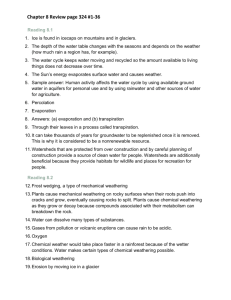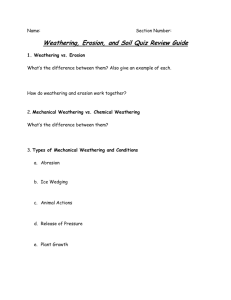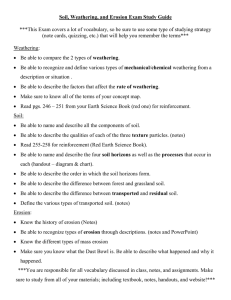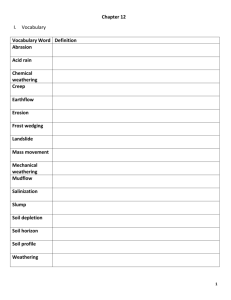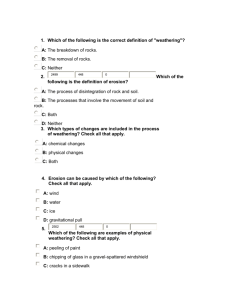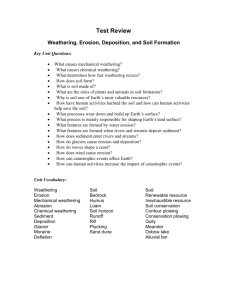Chapter 7 - Weathering, Erosion, Soil Test 1
advertisement
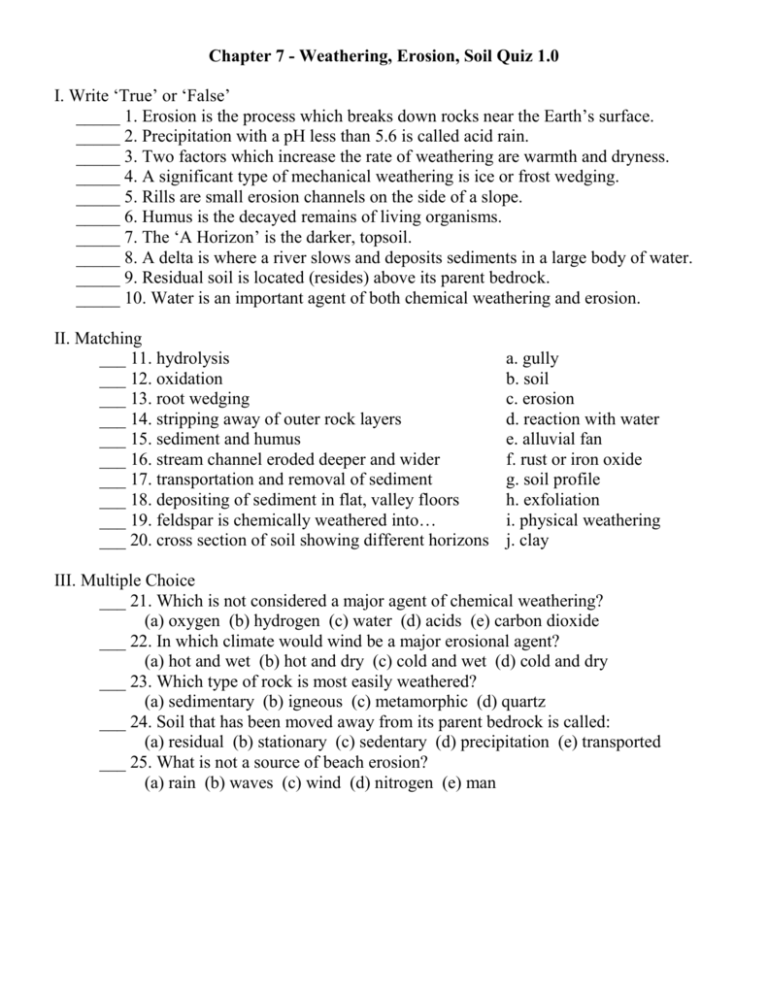
Chapter 7 - Weathering, Erosion, Soil Quiz 1.0 I. Write ‘True’ or ‘False’ _____ 1. Erosion is the process which breaks down rocks near the Earth’s surface. _____ 2. Precipitation with a pH less than 5.6 is called acid rain. _____ 3. Two factors which increase the rate of weathering are warmth and dryness. _____ 4. A significant type of mechanical weathering is ice or frost wedging. _____ 5. Rills are small erosion channels on the side of a slope. _____ 6. Humus is the decayed remains of living organisms. _____ 7. The ‘A Horizon’ is the darker, topsoil. _____ 8. A delta is where a river slows and deposits sediments in a large body of water. _____ 9. Residual soil is located (resides) above its parent bedrock. _____ 10. Water is an important agent of both chemical weathering and erosion. II. Matching ___ 11. hydrolysis ___ 12. oxidation ___ 13. root wedging ___ 14. stripping away of outer rock layers ___ 15. sediment and humus ___ 16. stream channel eroded deeper and wider ___ 17. transportation and removal of sediment ___ 18. depositing of sediment in flat, valley floors ___ 19. feldspar is chemically weathered into… ___ 20. cross section of soil showing different horizons a. gully b. soil c. erosion d. reaction with water e. alluvial fan f. rust or iron oxide g. soil profile h. exfoliation i. physical weathering j. clay III. Multiple Choice ___ 21. Which is not considered a major agent of chemical weathering? (a) oxygen (b) hydrogen (c) water (d) acids (e) carbon dioxide ___ 22. In which climate would wind be a major erosional agent? (a) hot and wet (b) hot and dry (c) cold and wet (d) cold and dry ___ 23. Which type of rock is most easily weathered? (a) sedimentary (b) igneous (c) metamorphic (d) quartz ___ 24. Soil that has been moved away from its parent bedrock is called: (a) residual (b) stationary (c) sedentary (d) precipitation (e) transported ___ 25. What is not a source of beach erosion? (a) rain (b) waves (c) wind (d) nitrogen (e) man

